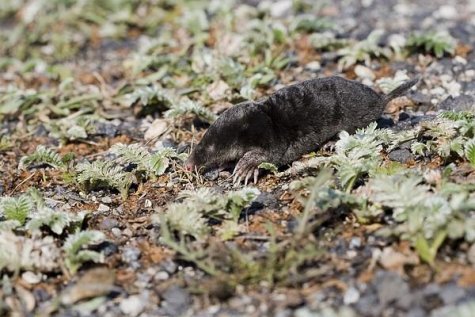Mole’s late autumn
Photo: Arne Ader
Translation: Liis
Mole
Common mole Harilik mutt Talpa europaea
Moles don’t hibernate, rather, they make mischief on late autumn lawns. For the diggers it is pleasant to work where the soil is loose and food plentiful – home gardens, parks, hayfields and forest outskirts – moles don’t live in dense forests.
Amazing capacity: a small creature of less than a hundred grams manages to push up a soil pile of a kilo to the surface. As a sure species sign a mole’s soil heap has a tunnel opening, diameter about 35 mm, in the centre.
The cylinder-shaped body of the mole is mostly covered by a black, dense fur with upright hairs that it currently is changing to winter fur.
Strong feet and claws are necessary for moving in the soil. The tiny eyes stay hidden in the facial hairs. On moving on the ground they are rather helpless: the mole’s eyesight is not particularly good. Hearing is poor too and a mole has no any ear flaps. The nose and upper lip are joined like a snout for feeling its way around. The well-developed sense of smell gives the direction for digging or hunting underground. The metabolism of insectivores works fast. In ”good times” the vole eats more than its body weight in food – as an estimate up to 150 grams. Basic food is of course earthworms that it stores in reserve, biting through the nerve end to make the earthworm unable to move, then bringing them into its larder. It roots for insects that have crept down for wintering and their grubs, snails, lizards, frogs or mice, in case of hunger carcase can be used.
Winter is spent below the freezing line of soil.
It leads a solitary life and is aggressive towards conspecifics that might intrude, except in the mating period in spring.









